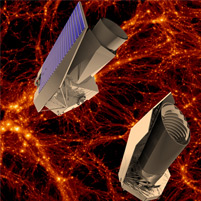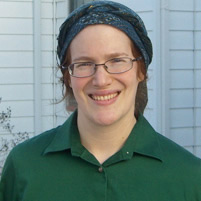Euclid Mission

Two concepts for Euclid Satellite

Shirley Ho

Rachel Mandelbaum
Carnegie Mellon University astrophysicists Shirley Ho and Rachel Mandelbaum are part of a team tasked with chasing down some of the universe's most mysterious phenomena: dark matter and dark energy. As part of a NASA team working on the Euclid mission, a European initiative to build a space-based telescope, the researchers will study how dark matter and dark energy manifest themselves in the universe.
Ho and Mandelbaum are assistant professors of physics and members of CMU's Bruce and Astrid McWilliams Center for Cosmology. They are among 40 researchers on the elite U.S. team that will participate in building and launching the space-based telescope.
Euclid is part of the European Space Agency (ESA). NASA is working in conjunction with the ESA, and will support the researchers from 2013 to 2028 as they prepare for and carry out collaborative scientific research using the data gathered by Euclid, which is planned for launch in 2020.
Though they make up more than 95 percent of the matter and energy in the universe, dark matter and dark energy cannot be seen; their presence can be detected only by their effects on items that are visible and can be measured, such as stars and galaxies. Euclid will not only be an optical telescope but also will be outfitted with imaging and spectroscopic instruments to study the expansion history of the universe. This is where the expertise of Ho and Mandelbaum come into play.
Mandelbaum studies the slight distortions in the images of galaxies, which are caused by the gravitational pull of dark matter, called weak gravitational lensing. This type of measurement allows researchers to derive how much dark matter lies between galaxies and how it is distributed throughout space.
"With lensing we can learn about the large scale distribution of all of the matter of the universe — even the dark matter we can't see. If we truly want to understand the structure and evolution of the universe, we need a tool like lensing that reveals the presence of all of the matter," Mandelbaum said.
Ho specializes in redshift space distortions — changes in light wavelength as the object emitting light moves away from the observer — and baryon acoustic oscillations, which are essentially echoes of sound waves. These faint reverberations can be measured and used to determine the universe's expansion over time.
Of the capabilities of the mission, Ho said, "Euclid scientists can combine what is learned from these probes to test our understanding of what the universe is made of and how the universe works."
Related Links: Mellon College of Science | Physics Dept | Euclid Mission | Bruce and Astrid McWilliams Center for Cosmology
